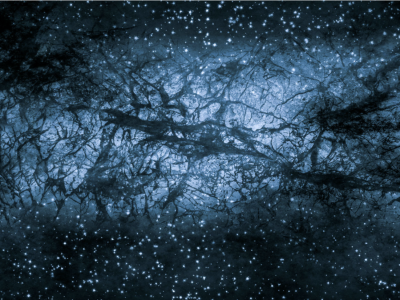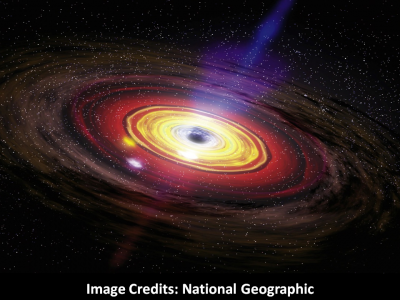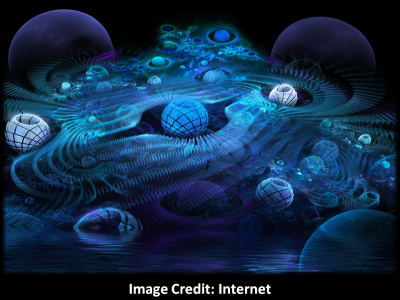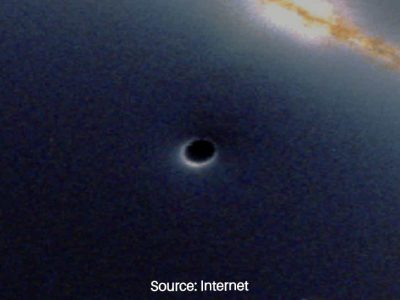
While I am writing these letters I memorize two related things in which you can draw a fantabulous image about the topic:
A scientific experiment finds a mixture of matter and antimatter inside a proton:
Scientific simulations of atoms are like the Russian Matryoshka game of overlapping shapes, where particles are superimposed inside other particles, nuclei made of neutrons and protons, which in turn contain a trio of fundamental particles called quarks. With the simplicity of this description, the atomic engine that operates inside these subatomic particles behaves randomly. Quarks and antiquarks add and cancel each other, but they do not reach equilibrium at all.
In the early 1990s, physicists shocked and split protons in an attempt to understand the strange activity of quarks, which complicated the search for subatomic equilibrium. The results raised further suspicion, prompting them to re-examine and confirm the results.
In subsequent experiments at the Fermi National Accelerator Laboratory in the United States, scientists suggested that something strange was happening when the momentum of the particles reached the limit that the sensors could read, prompting the researchers to organize a new experiment at the Sea Quest Laboratory, which includes a mixture of old sensors and ionic detectors that were designed To detect the center of the quark floating inside the proton with higher accuracy than before.
It took the team twenty years of working on splitting atoms and digging through the information they collected to confirm that there was a strange imbalance of antimatter inside each proton examined.
Quarks come in different shapes and are given cute names such as up, down, magic and strange. When two up quarks and a down quark stick together as a result of the strong nuclear force, we call the triple proton.
This is the simplest explanation because the true nature of this triple structure consists of the chaos formed by the merging and vanishing particles as sailors drowning in the midst of a storm.
Things get complicated when we know that each of these quarks has an opposite form, called an antiquark.
When one of these quarks meets their antiquark, they both vanish, leaving behind a photon flash. This photon changes rapidly, leaving behind a beam of particles and their antiparticles that appear and disappear in the chaos of light.
“The instantaneous nature of the quark-antiquark pairs makes their presence in the proton difficult to study and measure, but in this experiment, we were able to observe antiquark decay, which gave us a better perspective on the asymmetry and equilibrium,” says physicist Paul Reimer of the US Department of Energy.
Since up and down quarks have roughly the same mass, there is no reason to think that quantum fog does not give preferential treatment to creating antiparticles. Theoretically, the quarks cancel each other out, which suggests an apparent equilibrium for the triple quark.
Preliminary experiments dating back to the 1990s showed that the reality of particles is more complex than we thought, especially with the presence of lower type antiquarks that are more visible than upper type, leaving physicists confused by the difference in the quantum numbers of atoms.
One explanation is how a proton is rapidly transformed into a neutron by radiating pairs of quarks and antiquarks and then absorbing them again by the so-called “triple pion”.
On the other hand, if we imagine the proton as a balloon of quarks revolving around it with different energies, this momentum might help us translate the kinds of quarks that appear and disappear.
Scientists researched at the turn of the millennium on the momentum of quarks, which gave a broader scope for their properties to be measured and predicted. The tests helped develop the equipment needed for research, and the results showed that the momentum of the quarks was relatively high, this time with the top antiquark being more prevalent.
Information collected by the SeaQuest laboratory contradicts these results, as down quarks are found to be dominant even at the highest levels of momentum. This is the information physicists need to begin probing the depths of the proton through computer simulations.
“Our understanding of the quark inside the proton and its effect on its properties is still incomplete,” says Reimer.
As is the norm in particle physics, we need a lot of experimental information before we can reach definitive results. These dolls mounted inside the atom are not easy to detect in one go.
Breaking a new record for slowing antimatter:

Unlocking the secrets of antimatter (Image Source: Towards Data Science)
In an inverted universe in which time goes backward, the matter is replaced by antimatter; Which brings us back to where we started, and thus reproduces the reality we all know. Our universe and the inverse universe of exotic antimatter would look identical. But what if that doesn’t happen?
Although this is unlikely in contemporary physics, the possibility itself may open up a whole new area for researchers to explore, making it a question worth our time.
Unfortunately, antimatter isn’t easy to study, it’s hard to produce, and it’s prone to fading out when exposed to little gamma rays when it hits ordinary matter, even when it collects enough to study it, it travels around at breakneck speeds. In some studies, this isn’t necessarily a big problem, but if you want to measure the tiny force of gravity on its particles, you should keep it as constant as possible.
The Alpha experiment at CERN, the European organization for nuclear research, has been working on creating a way to suppress antimatter particles for a few years now via the smart application of a carefully tuned laser.
These experiments finally bore fruit, and worked on the particles of antihydrogen, an analogue of hydrogen, which is the lightest of all the elements, and succeeded in slowing it down from a high speed to a normal speed.
A variety of methods transfer energy from the direct surroundings of particles. Slowing down antimatter is a big challenge, it requires methods that don’t involve it colliding with matter particles because that would instantly decay into a flash of radiation.
In recent decades, decelerator technology has slowed entire atoms of antimatter from near the speed of light to a controllable enough level to allow physicists to run at least some tests, such as extracting the antihydrogen spectrum patterns.
So far, the results of these studies have shown that hydrogen and antihydrogen are more or less identical, apart from their opposite charges, which is a little disappointing. Any difference could tell us why one form of matter continues to form the universe at the expense of others. However, there is a remote possibility that with the same masses, gravity might favor one of them, or perhaps some other force might have a subtle effect on antimatter in ways we don’t yet know.
To get a good measure, we need to slow down the antimatter even more. The alpha experiment slows down antiatoms by spewing them with photons in a way that you don’t inadvertently activate them at the same time. Just like regular hydrogen atoms, antihydrogen atoms can absorb or scatter photons to lose or gain momentum. This effect only occurs if the light is at the correct frequency, but if the frequency is too high or too low, the light waves will pass right next to it.
The researchers tuned the laser correctly to account for the speed of the antihydrogen rushing toward the source, ensuring that the photons would propagate within the ideal frequency when they hit the antihydrogen. After several collisions, particles traveling at 300 kilometers per hour could be slowed to less than 50 kilometers per hour. In contrast, particles that are hurtling away from the laser are invisible to their relative frequency, which avoids an impulse accelerating them.
“With this technique, we can answer the vexing questions: How does anti-gravity respond?” says Takamasa Momoz, a physicist from the University of British Columbia who is part of the Canadian Alpha team. Can antimatter help us understand symmetries or symmetries in physics? The answers could change our understanding of the universe entirely”.
We’ll need to wait a little longer before we see the results of experiments like this, and we need to prepare ourselves for the possibility that even when we’re careful, unraveling the mysteries of antimatter can be difficult.
But perhaps that’s how we get a glimpse of that inverse, anti-universe in which time runs backward, a universe that seems much stranger than our best theorists currently imagine.
Now Let’s turn our spaceships into the high way of the main topic
:max_bytes(150000):strip_icc()/Fermi_5_year-58b84a655f9b5880809d8af4.jpg)
Image Source: ThoughtCo
As part of a new analysis of the properties of that radiation, a team of astrophysicists has concluded that this radiation corresponds to what is expected to be emitted by stars composed of antimatter, which are theoretical objects known as antistars. If proven true, it would be of great value, it may help us solve one of the most complex mysteries in the universe, the mystery of all the missing amounts of antimatter, but there are still other possibilities for what those 14 objects are.
Each of the particles that make up the matter that make up all the bodies and things around us – such as electrons and quarks – has an analogue with identical properties except for the opposite charge. It is believed that particles and antiparticles were produced in equal quantities at the beginning of the universe.
When a particle collides with its antiparticle counterpart, they destroy each other and a wave of gamma rays is released, indicating that they must be present in equal quantities or there would never be anything, but for some unknown reason, only trace amounts of antimatter were observed.
We’re getting used to the idea that almost nothing of the original antimatter remains in the universe, and physicists have developed models and explanations based on this assumption, an important research endeavor.
Then came the Alpha Magnetic Spectrometer experiment carried out aboard the International Space Station a few years ago, and it initially revealed antihelium, a finding that, if true, means that there are enough elementary antiparticles to assemble into whole atoms of antimatter.
But where is that antimatter?
According to a team of astronomers led by Simone Duburque at the Research Institute for Astrophysics and Planetology in France, antimatter may be lurking in the form of antistars in the Milky Way.
Since antistars can behave very similarly to normal stars, it will be very difficult to detect them unless ordinary matter, such as cosmic dust, accumulate on the surface of the antistar where it is scattered by the effect of the antistar’s antimatter, thus increasing the gamma-ray flux at higher levels A certain energy that we can theoretically observe.
We did not detect high gamma-ray annihilation of matter and antimatter in the cosmic microwave background radiation – the residual radiation from the Big Bang – nor in gamma-ray surveys of the Milky Way. In their study, Duburque and his team focused on data collected over 10 years from the Fermi Gamma-Ray Space Telescope, carefully examining 5,787 gamma-ray sources for signs of what might be the annihilation of matter and antimatter.
They specifically searched for gamma-ray signals corresponding to proton and antiproton destruction, as well as for a point-like geometry within the same source, i.e. what appears to be a star. Of the 5,787 sources, only 14 can be considered as candidates for antistars.
It is very unlikely that these fourteen objects are antistars; It could easily turn out to be a type of gamma-ray emitters, such as pulsars or black holes, but they paved the way for us to estimate how many anti-stars might be hiding in the space of the Milky Way.
By simulating anti-star accretion processes, and assuming that antistars have similar properties to regular stars, the team deduced an upper bound on their number in the galaxy. In the disk of the Milky Way, only 2.5 stars out of every million could be antistars.
But it might be different outside of the Milky Way’s disk within the galactic halo. The space above and below the disk is largely empty of gas and dust, meaning there is less material to accumulate on any potential antistar.
Without the accretion of ordinary matter, these antistars would not produce an excess of gamma rays, and so would avoid us more easily detecting them in gamma-ray surveys; In fact, anti-stars may have been hiding from us since the beginning of the universe.
According to the team’s calculations, it is unlikely that there are any antistars in the near ocean of the solar system, which means that the source of the antihelium is likely to be a cluster of antistars.
It’s also worth noting that 2.5 out of a million stars is very small (0.00025% ) compared to equal proportions of antimatter and normal matter, so discovering antimatter stars will not solve the problem of lost antimatter.
In practice, this potentially raises the question of how masses of antimatter can survive when surrounded by matter that would wipe them out in the blink of an eye.
The team’s work aims to provide new, more precise approaches to how many anti-stars there may be in space, so future work has a better basis to build on in trying to understand where and how we find antiparticles in the Milky Way.
Continuing to observe these 14 candidates will help determine if they are antistars, or something more moderate, such as a pulsar or a black hole, and this may be one of the only times that the term “moderation” may apply to these strange and mysterious objects.
Suggested Reading: The Discovery of the first super atomic accelerator in our Galaxy
Author












[…] revolve around the center of most galaxies, and more than 150 known star clusters belong to the Milky Way […]